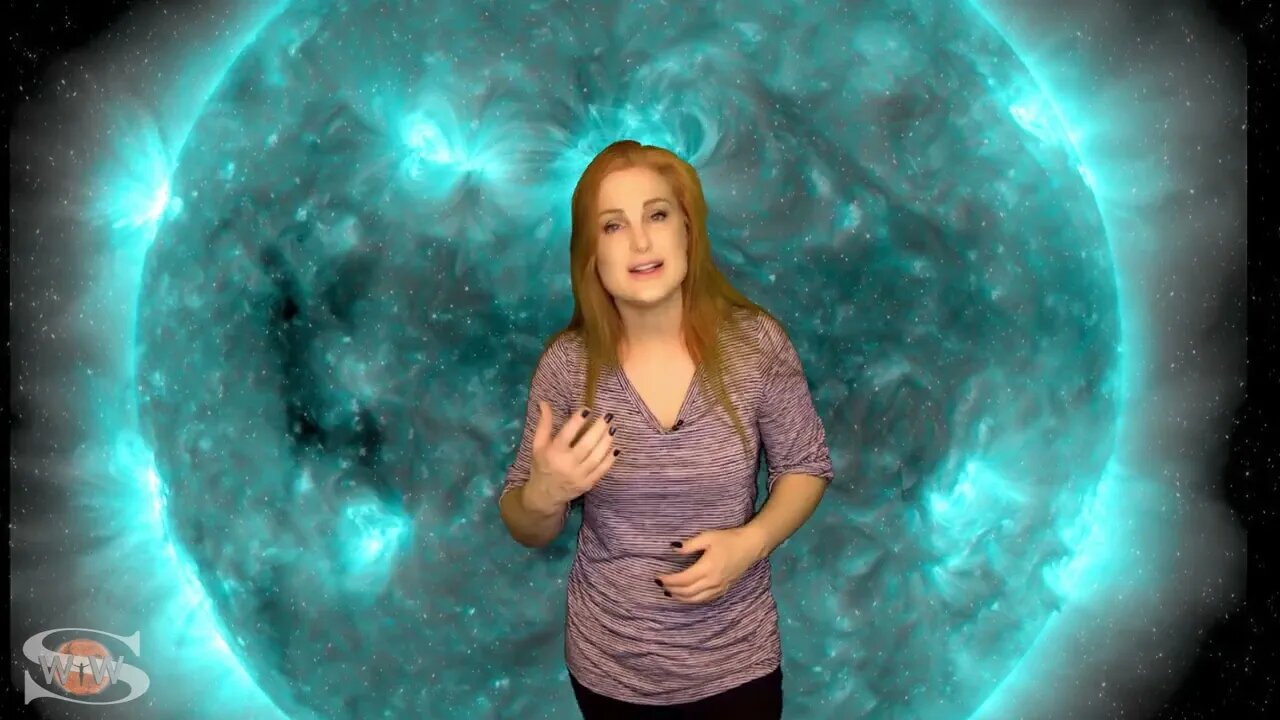Premium Only Content

X-Flare Player Fires in the Earth-Strike Zone | Solar Storm Forecast 02.01.2022
This Space Weather News forecast sponsored in part by Millersville University:
https://www.millersville.edu/swen
This week an X-flare player, region 2936, fires a big M-flare and launches a solar storm while in the Earth-strike zone. Prediction models from NOAA, NASA, and the MetOffice estimate the solar storm will arrive at Earth by February 2. Even though this solar storm is a bit on the slow side, it should still bump us to storm levels and bring aurora down to the tip of mid-latitudes. We could see aurora as far south as The Netherlands in Europe, the northern states of the USA, and as far north as northern New Zealand and Tasmania. Likely Australian folks (even down in Victoria) will have a difficult time seeing aurora, as the storm is not expected to be that strong. However, I have been wrong in the past-- if the solar storm arrives early, the impact could indeed be stronger than predicted! In addition to the coming solar storm, region 2936 is still a big flare player and along with a few other regions is keeping dayside radio propagation in the good range, with solar flux well into the triple digits and keeping the bands noisy. These conditions will persist easily throughout this week. GPS users, however, should be vigilant as GPS reception takes a hit this week, especially on Earth's nightside and near dawn and dusk. Learn the details of the coming solar storm, watch how many new bright regions are about to rotate into Earth-view, and see what else our Sun has in store.
Want early access to these forecasts, tutorials on Space Weather, & more? Visit:
https://patreon.com/SpaceweatherWoman
For daily and often hourly updates (during active times) visit me on Twitter:
https://twitter.com/TamithaSkov
For a more in-depth look at the data and images highlighted in this video see these links below.
Solar Imaging and Analysis:
SDO: http://sdo.gsfc.nasa.gov/data/
Helioviewer: http://www.helioviewer.org/
Flare Analysis: http://www.lmsal.com/solarsoft/latest_events/
Computer Aided CME Tracking CACTUS: http://www.sidc.oma.be/cactus/out/latestCMEs.html
GOES Xray: http://www.swpc.noaa.gov/rt_plots/xray_1m.html
SOHO: http://sohodata.nascom.nasa.gov/
Stereo: http://stereo.gsfc.nasa.gov/
GONG magnetic field synoptic movie: https://gong.nso.edu/data/magmap/standard_movie.html
GONG magnetic field synoptic charts: http://gong.nso.edu/data/magmap/
LMSAL Heliophysics Events HEK http://www.lmsal.com/isolsearch
Solar Wind:
DISCOVR solar wind: http://www.swpc.noaa.gov/products/real-time-solar-wind
ACE Solar Wind: http://www.swpc.noaa.gov/products/ace-real-time-solar-wind
NASA ENLIL SPIRAL: https://iswa.gsfc.nasa.gov/IswaSystemWebApp/iSWACygnetStreamer?timestamp=2038-01-23+00%3A44%3A00&window=-1&cygnetId=261
NOAA ENLIL SPIRAL: http://www.swpc.noaa.gov/products/wsa-enlil-solar-wind-prediction
Magnetosphere, Ionosphere, Atmosphere:
GOES Magnetometer: http://www.swpc.noaa.gov/products/goes-magnetometer
Ionosphere D-Region Absorption (DRAP) model: http://www.swpc.noaa.gov/products/d-region-absorption-predictions-d-rap/
Auroral Oval Ovation Products: http://www.swpc.noaa.gov/products/aurora-30-minute-forecast
Global 3-hr Kp index: http://www.swpc.noaa.gov/products/planetary-k-index
Wing Kp index prediction: http://www.swpc.noaa.gov/products/wing-kp
USGS Ground Magnetometers: http://geomag.usgs.gov/realtime/
USGS Disturbance Storm-Time (Dst): http://geomag.usgs.gov/realtime/dst/
NAIRAS Radiation Storm Model: http://sol.spacenvironment.net/raps_ops/current_files/globeView.html
Multi-Purpose Space Environment Sites:
NOAA/SWPC: http://www.swpc.noaa.gov
SOLARHAM: http://www.solarham.net/index.htm
Spaceweather: http://spaceweather.com
iSWA: http://iswa.gsfc.nasa.gov/iswa/iSWA.html
Definition of Geomagnetic Storm, Radiation Storm, and Radio Blackout Levels:
http://www.swpc.noaa.gov/NOAAscales/
None of this would be possible without the hard work and dedication of those who have provided all of this data for public use.
Images c/o NASA/ESA/CSA (most notably the superb SDO, SOHO, ACE, STEREO, CCMC, JPL & DSN teams, amazing professionals, hobbyists, institutions, organizations, agencies and amateurs such as those at the USAF/HAARP, NICT, NOAA, USGS, Environment Canada, Natural Resources Canada, Intellicast, Catatania, rice.edu, wisc.edu, sonoma.edu ucalgary.ca, rssi.ru, ohio-state.edu, solen.info, and more. Thanks for making Space Weather part of our every day dialogue.
-
 14:35
14:35
Dr. Tamitha Skov
1 year ago $0.02 earnedBig Flares, Mini-Storms & A Whole Lot of Eye Candy | Solar Storm Forecast 10 December 2023
2451 -
 59:29
59:29
Steven Crowder
4 hours agoCrafting Crowder's Comedy Gold | Behind the Scenes
172K89 -
 2:06:44
2:06:44
Tim Pool
3 hours agoTHE END OF THE WEST, Will We Survive Without Christianity? | The Culture War with Tim Pool
84.1K47 -

LFA TV
16 hours agoBODYCAM FOOTAGE OF TRAFFIC STOP! | LIVE FROM AMERICA 2.28.25 11AM
33.7K16 -
 LIVE
LIVE
The Big Mig™
4 hours agoGlobal Finance Forum From Bullion To Borders We Cover It All
1,941 watching -
 31:13
31:13
Tudor Dixon
2 hours agoThe Last Supper with Chris Tomlin | The Tudor Dixon Podcast
11.9K -
 48:58
48:58
BonginoReport
5 hours agoFake Epstein Files Fallout + Will Cain on the Government’s Internal Civil War (Ep.150) - 02/28/2025
119K264 -
 22:54
22:54
Clownfish TV
12 hours agoJournalists are RAGE QUITTING! Mainstream Media's Free Ride is OVER!
22.6K4 -
 3:25:28
3:25:28
Matt Kohrs
10 hours agoMarket Crash, Inflation Report & Payday Friday || The MK Show
67.7K8 -
 2:59:07
2:59:07
Wendy Bell Radio
8 hours agoThe Astroturfing Of America
90.9K58